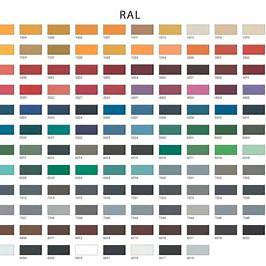Lighting Cabinet, Multi-channel LED, Daylight & Blackbody Simulator, Image Evaluation, Camera Calibration, Visual Assessment
Precision in Color Management: How RAL Standards and CMF Design Influence Industrial Color?
In the World of Color, Precision Matters More Than You Think!
From smartphones and automobiles to architecture, home appliances, and medical equipment, color, material, and finish (CMF) design plays a crucial role in shaping our visual experiences. In industrial manufacturing, ensuring color consistency and stability is essential, as it directly impacts brand identity, product quality, and consumer purchasing decisions.
But did you know? The same color can appear drastically different under different lighting conditions! This is why color standardization and precise control are critical in industrial design, brand marketing, and manufacturing processes. This necessity is at the heart of both RAL color standards and CMF design principles.
As globally renowned color scientist Professor Ronnier Luo famously stated, "In our industry, color is everything." This statement is not just a motto for designers but a fundamental truth for all professionals involved in color management. How can we ensure that colors remain accurate and consistent across different lighting environments? A perfectly matched color in the lab might look completely different under store lighting, daylight, or office illumination, potentially leading to inconsistencies in product appearance and market perception. Addressing this challenge is the driving force behind advancements in color science—and the key topic of our discussion today.
What is RAL? Why is it the Global Color Standard?
RAL (Reichs-Ausschuss für Lieferbedingungen) is a German-developed international color standard system, widely used across multiple industries. Since its establishment in 1927, the RAL color system has been a benchmark in automotive manufacturing, home appliances, architectural coatings, industrial products, and aerospace to ensure global color consistency.
Key Features of the RAL Color System
✅ Global Standardization – Each RAL color has a unique identification code, such as RAL 9010 (Pure White), ensuring consistent color reproduction across global supply chains.
✅ Extensive Industrial Application – Used in automotive coatings, household appliances, building materials, and more, ensuring uniform color appearance in various industries.
✅ RAL Classic & RAL Design Plus –
● RAL Classic: Over 200 colors primarily used in industrial and architectural materials.
● RAL Design Plus: Over 1,800 shades based on the CIELab color model, providing an advanced color palette for professional design applications.

↑The RAL Classic color system's swatch book, widely utilized in the paint and coatings industry to ensure color consistency and standardization.(Source: https://www.ral-farben.de/en/ral-classic)
RAL 2026+ Color Trends: Sustainability in Color Design
In the recently released 2026+ Color Trend Report, RAL introduced the concept of "Understand + Elevate", emphasizing:
● Continuing 5 classic colors and introducing 10 new ones, maintaining color stability while fostering innovation.
● Optimizing color resources to enhance sustainability, ensuring that designers and manufacturers adopt a more environmentally conscious and economically viable approach to color selection.
However, even with the most precise RAL standards, lighting variations can still influence color perception. How can we ensure stable and consistent color performance in real-world applications?
CMF Design: Beyond Color—The Art of Visual and Tactile Experience
If RAL standards provide color standardization, CMF (Color, Material, Finish) design shapes the overall sensory experience of a product.
CMF = Color + Material + Finish, impacting not only product aesthetics, texture, and durability but also consumer perception and brand positioning. For example:
● Smartphone design – The choice of glass, metal, or plastic influences the premium feel of a device.
● Automotive interiors – The selection between leather or fabric, matte or gloss finishes defines the balance between luxury and comfort.
● Medical devices – Materials must be corrosion-resistant, sterilization-friendly, and visually optimized for reducing eye strain in clinical environments.

↑Sony's design works from its CMF×MOOD exhibition, emphasizing the significance of color, material, and finish in product design.(Source: https://www.sony.com/en/SonyInfo/design/news/event/cmf_mood/)
Covestro 2025+ CMF Design Trends
Leading material technology company Covestro introduced the 2025+ CMF Design Report, highlighting:
● Intelligent material and sustainable color management are shaping future design trends in electronics, automotive, and healthcare.
● CMF design is no longer just about aesthetics—it integrates functionality, user experience, and sustainability.
But a major challenge remains: CMF colors can appear completely different under varying lighting conditions. For instance:
● A car paint finish that looks perfect in a showroom may appear inconsistent under natural daylight.
● A medical device tested under lab lighting may look different when placed in a real hospital setting.
This is why precise lighting solutions are essential for ensuring true color reproduction in industrial applications.
Thouslite: Intelligent Lighting Solutions for Industrial Color Management
To address these challenges, high-precision intelligent lighting solutions are playing an increasingly critical role in color management. As a leading provider of advanced lighting solutions, Thouslite specializes in precise, stable, and adjustable lighting technologies for industrial, scientific, and display applications—ensuring consistent color performance across different lighting environments.
Core Advantages of Thouslite’s Intelligent Lighting Solutions
🔹 Multi-Spectral Tunability – Enables precise color temperature adjustment and spectral control, meeting the demands of industrial, research, and testing applications.
🔹 Lighting Consistency – Ensures color stability across various production processes and end-use environments, eliminating discrepancies caused by lighting variations.
🔹 Compliance with International Standards – Supports CIE color measurement standards and ISO color management systems, helping industries enhance their color quality control.
🔹 Diverse Applications –
● Display & Imaging Tests – High-precision lighting supports camera, display, and sensor calibration for accurate color reproduction.
● Automotive & Industrial Coatings – Assists manufacturers in verifying paint, plastic, and metal component colors under different lighting conditions.
● Optical Research – Enables advanced spectral analysis and color evaluation for high-precision scientific studies.
In industrial color management, traditional color standardization is not enough—real-world lighting conditions must also be considered. Thouslite’s intelligent lighting technologies ensure that every stage of color management is executed with unparalleled precision, empowering designers, engineers, and brands to take full control of color accuracy.
📌 Want to learn more about how Thouslite’s intelligent lighting solutions can enhance your color management strategy? Visit our official website! 👉 Thouslite Official Website

